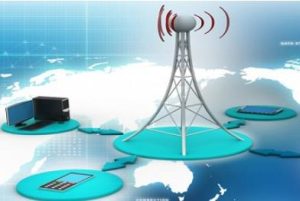Why Are Horn Antennas Important in RF Systems?
Precision in Directional Broadcasting

Horn antennas are renowned for their ability to precisely direct RF signals, a critical factor in many RF system applications. Unlike omni-directional antennas that radiate energy in all directions, horn antennas focus energy in a specific direction, enhancing signal reach and strength. This directional capability ensures efficient use of power and minimizes interference with other electronic devices. In technical terms, horn antennas can achieve a directivity of up to 25 dB, focusing the radio beam into narrow angles as tight as 10 degrees or less.
Wide Frequency Bandwidth
One of the standout features of horn antennas is their wide bandwidth. They can operate effectively over a broad range of frequencies, typically from 300 MHz to beyond 18 GHz. This versatility makes horn antennas indispensable in systems where multiple frequency bands are in use, such as in satellite communication and radar systems. Their ability to handle various frequencies without requiring adjustment or substitution is a significant advantage, reducing the complexity and cost of system design.
Exceptional Gain and Efficiency
Horn antennas are also known for their high gain, which is the ability to increase the power of a signal in a specific direction. A typical horn antenna can provide gains ranging from 10 dB to 20 dB, depending on its size and design. This high gain is beneficial for long-distance communication applications, including deep-space communications and high-frequency trading systems, where maintaining strong signal strength over vast distances is crucial.
Robustness and Reliability
The simplicity of their design contributes significantly to the robustness and reliability of horn antennas. With no moving parts and constructed typically from metals like aluminum, these antennas are inherently durable and resistant to harsh environmental conditions. This makes them especially suited for outdoor applications, where exposure to elements such as rain, wind, and extreme temperatures demands equipment that can withstand adverse conditions without degradation in performance.
Ease of Integration and Use
Integrating horn antennas into RF systems is straightforward due to their inherent simplicity and compatibility with various transmission lines and waveguides. They are commonly used in conjunction with waveguides, seamlessly transitioning electromagnetic waves from the waveguide into free space and vice versa. This ease of integration is essential for rapidly deploying RF systems, especially in test and measurement scenarios where setup time is critical.
Key Applications in Modern Technologies
Horn antennas play pivotal roles in modern technological applications. They are critical in radar systems used for air and maritime navigation, providing the necessary directional and gain characteristics for accurate object detection. Additionally, in telecommunications, they are essential for satellite ground stations, where they facilitate reliable communication links with orbiting satellites.
Conclusion
Horn antennas are a cornerstone of RF system design due to their precision, wide bandwidth, high gain, and robust construction. Their ability to focus RF energy precisely and efficiently makes them invaluable in applications requiring high performance, reliability, and straightforward deployment. As RF technology continues to evolve, the role of horn antennas remains crucial in pushing the boundaries of what is possible in communication and radar systems.